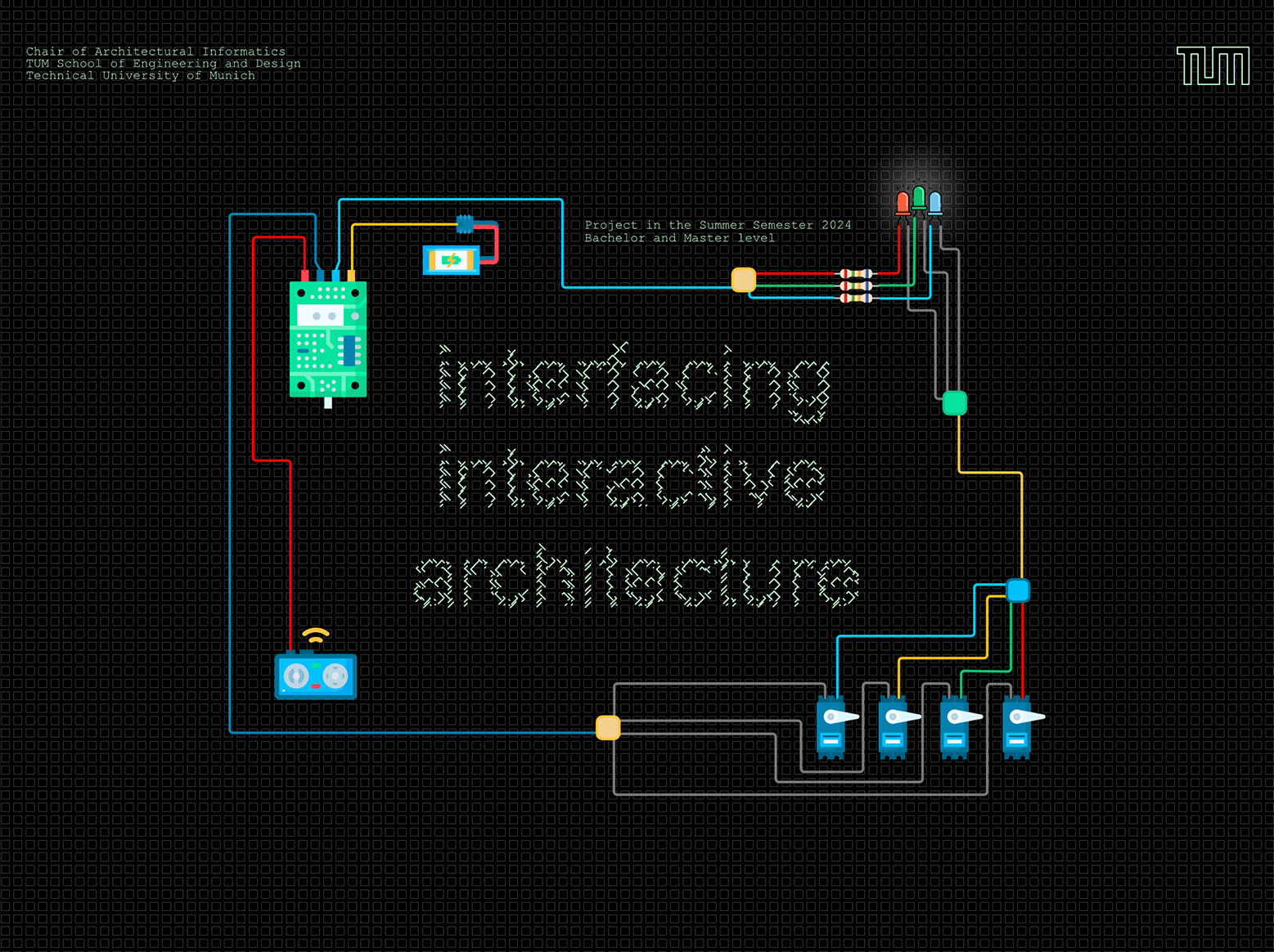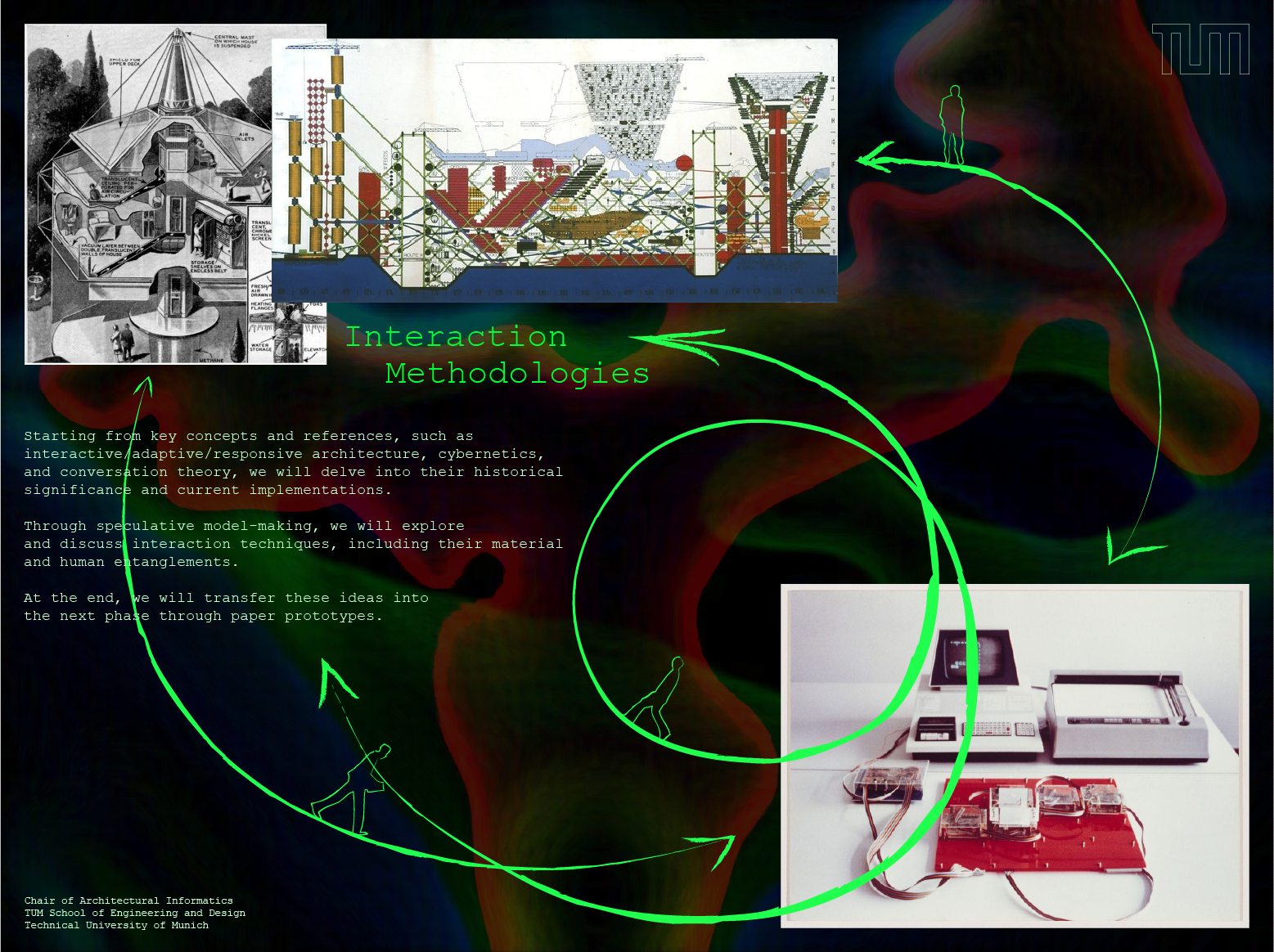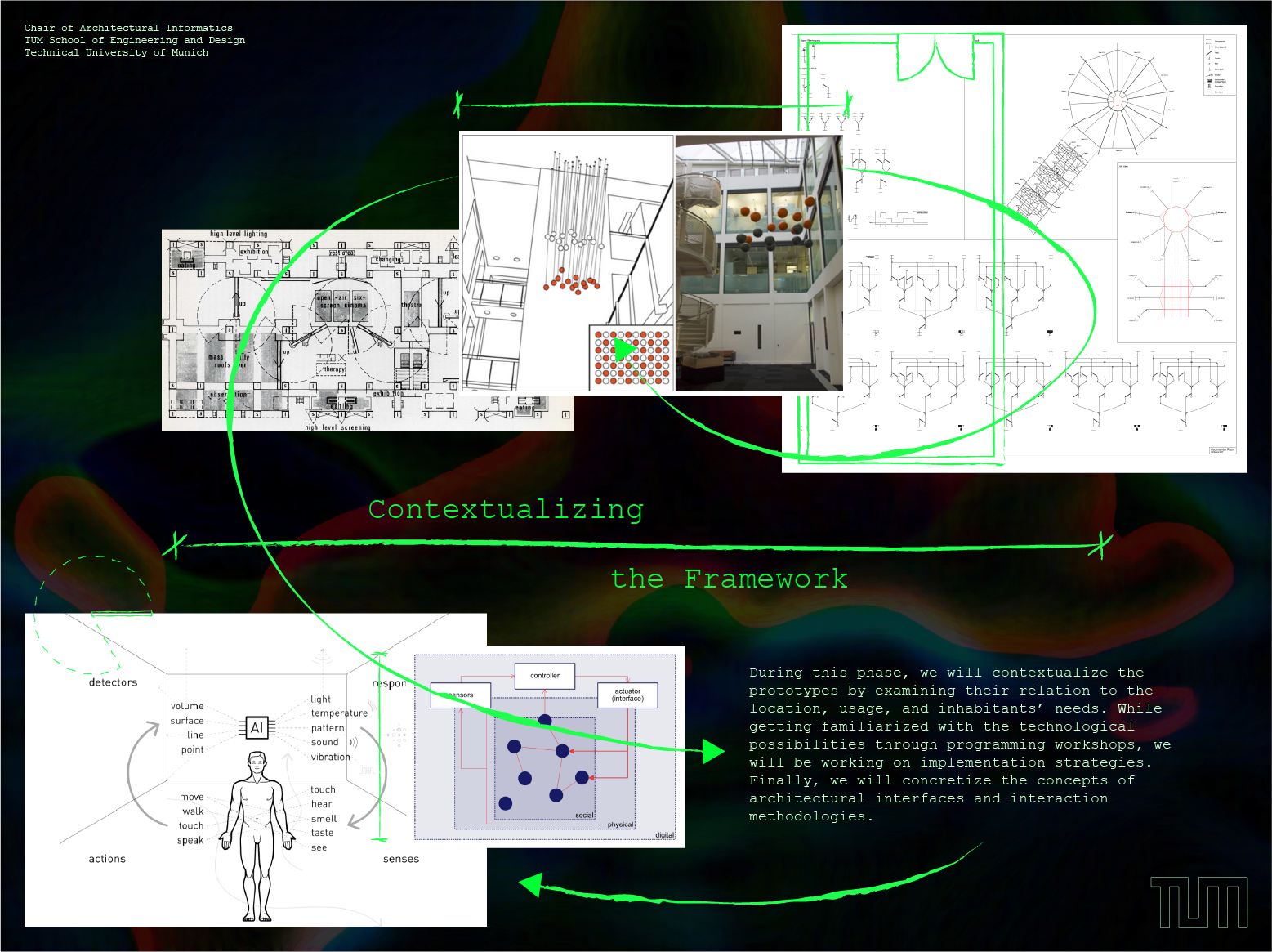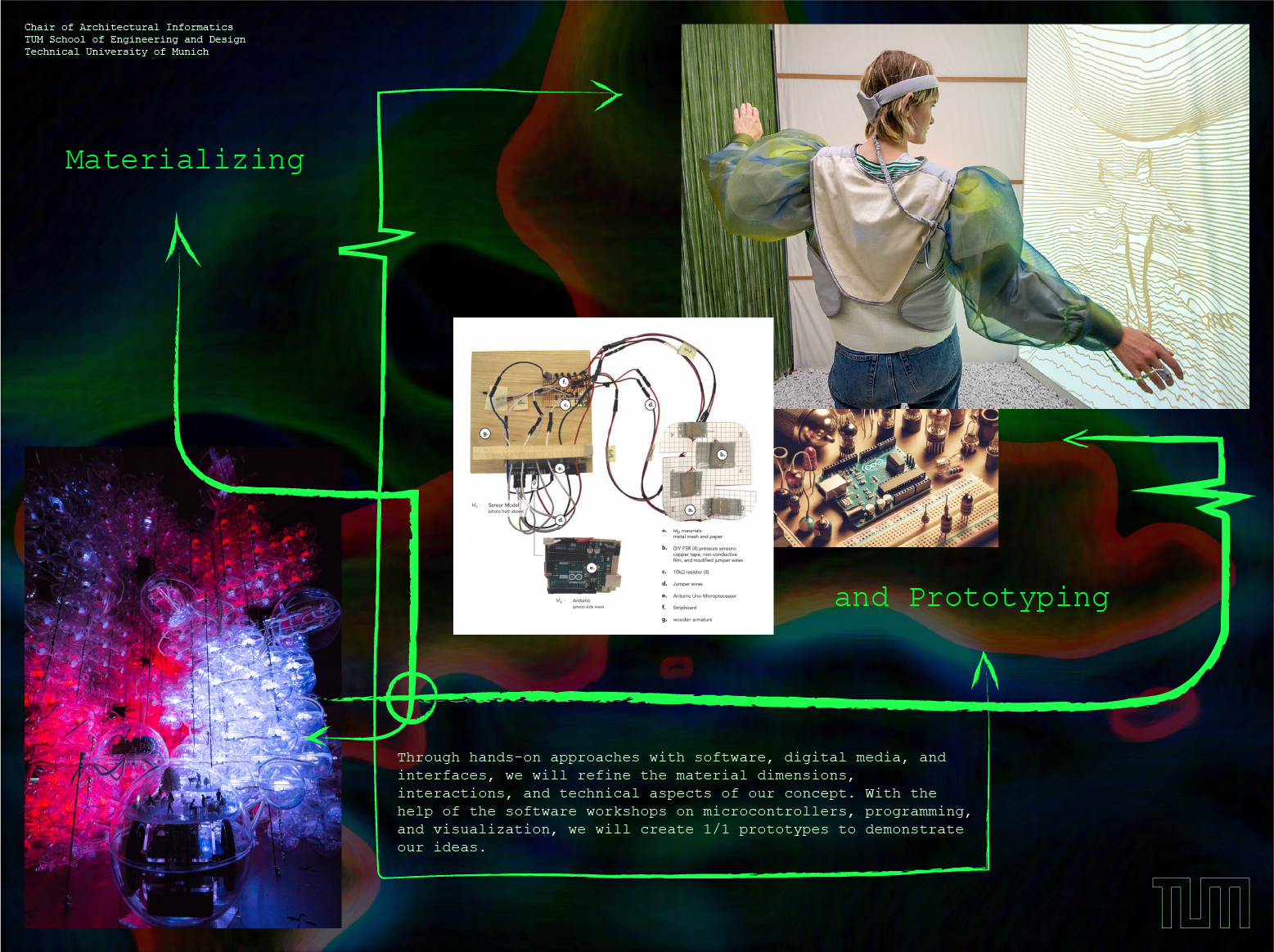Interfacing Interactive Architecture
Project in Summer Semester 2024
“Our architecture will learn
Our architecture will get bored
Our architecture will interact”
-Minimaforms
In the cybernetics era, visionaries approached interaction, flexibility, and automation as central architectural principles. Projects from Cedric Price, Gordon Pask, and Architecture Machine Group are still a great inspiration for many people working with interactive art installations and dynamic architectures. Ideas like the Price’s Fun Palace introduce new playful, aesthetical dimensions into architecture.
Looking at contemporary examples of obsolescent smart homes and automated ventilation, this promise remains unfulfilled. Mainstream examples, which focus on automation or environmental sustainability, offer limited application areas and mostly lack human input. Diverse artistic projects provide interesting insights into spatial interactions. The question remains, how these artistic experiments can be translated to a more general architectural setting.
During the semester, we will examine intelligent and interactive environments in the context of historical developments, architectural theories, and their connections to current practices. After creating a conceptual framework, we will be creating interactive prototypes as proof of concept.
Interaction Methodologies
Starting from key concepts and references, such as interactive/adaptive/responsive architecture, cybernetics, and conversation theory, we will delve into their historical significance and current implementations. Through speculative model-making, we will explore and discuss interaction techniques, including their material and human entanglements. In the end, we will transfer these ideas into the next phase through paper prototypes.
Contextualizing the Framework
During this phase, we will contextualize the prototypes by examining their relation to the location, usage, and inhabitants’ needs. While getting familiarized with the technological possibilities through programming workshops, we will be working on implementation strategies. Finally, we will concretize the concepts of architectural interfaces and interaction methodologies.
Materializing and Prototyping
Through hands-on approaches with software, digital media, and interfaces, we will refine the material dimensions, interactions, and technical aspects of our concept. With the help of the software workshops on microcontrollers, programming, and visualization, we will create 1/1 prototypes to demonstrate our ideas.



